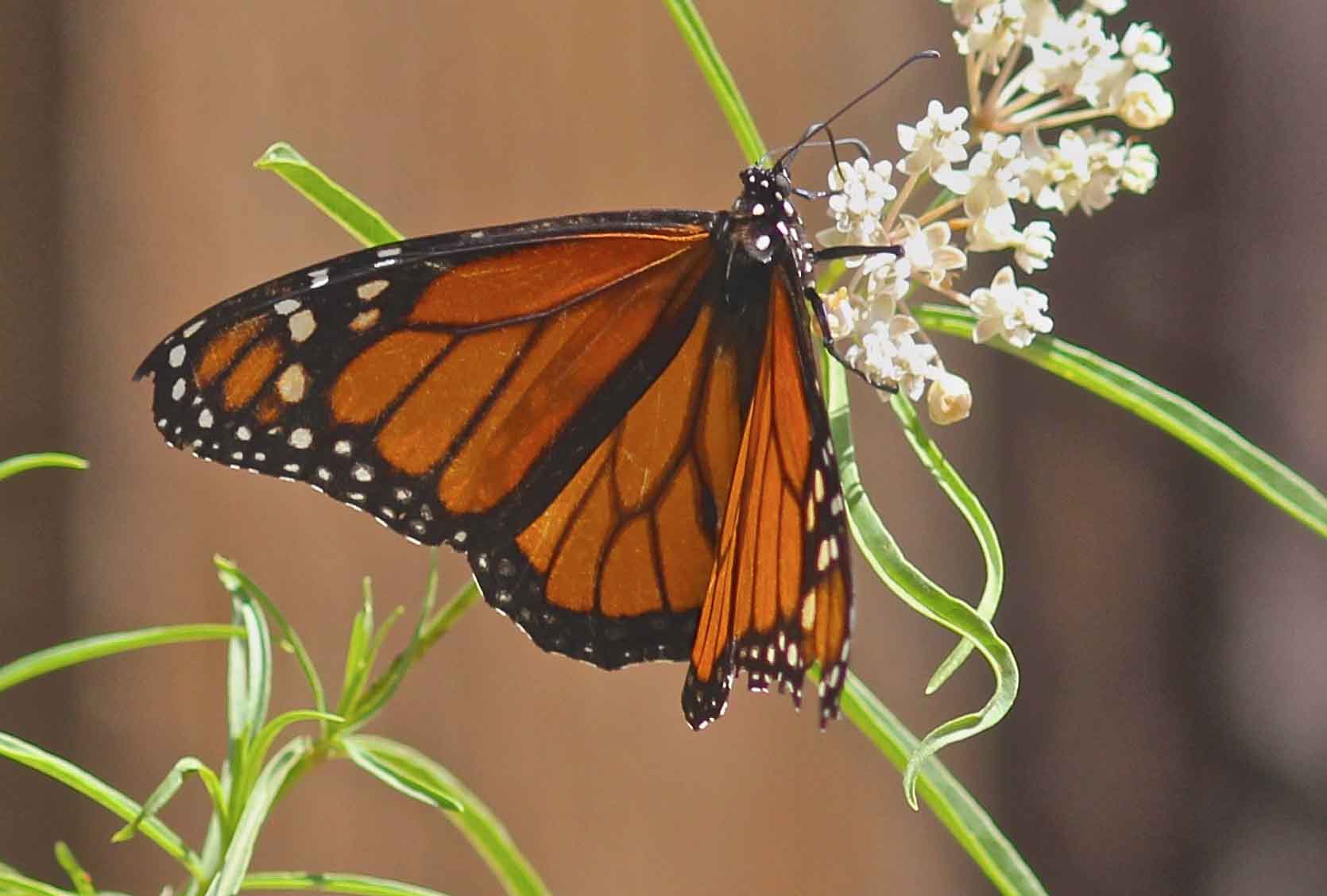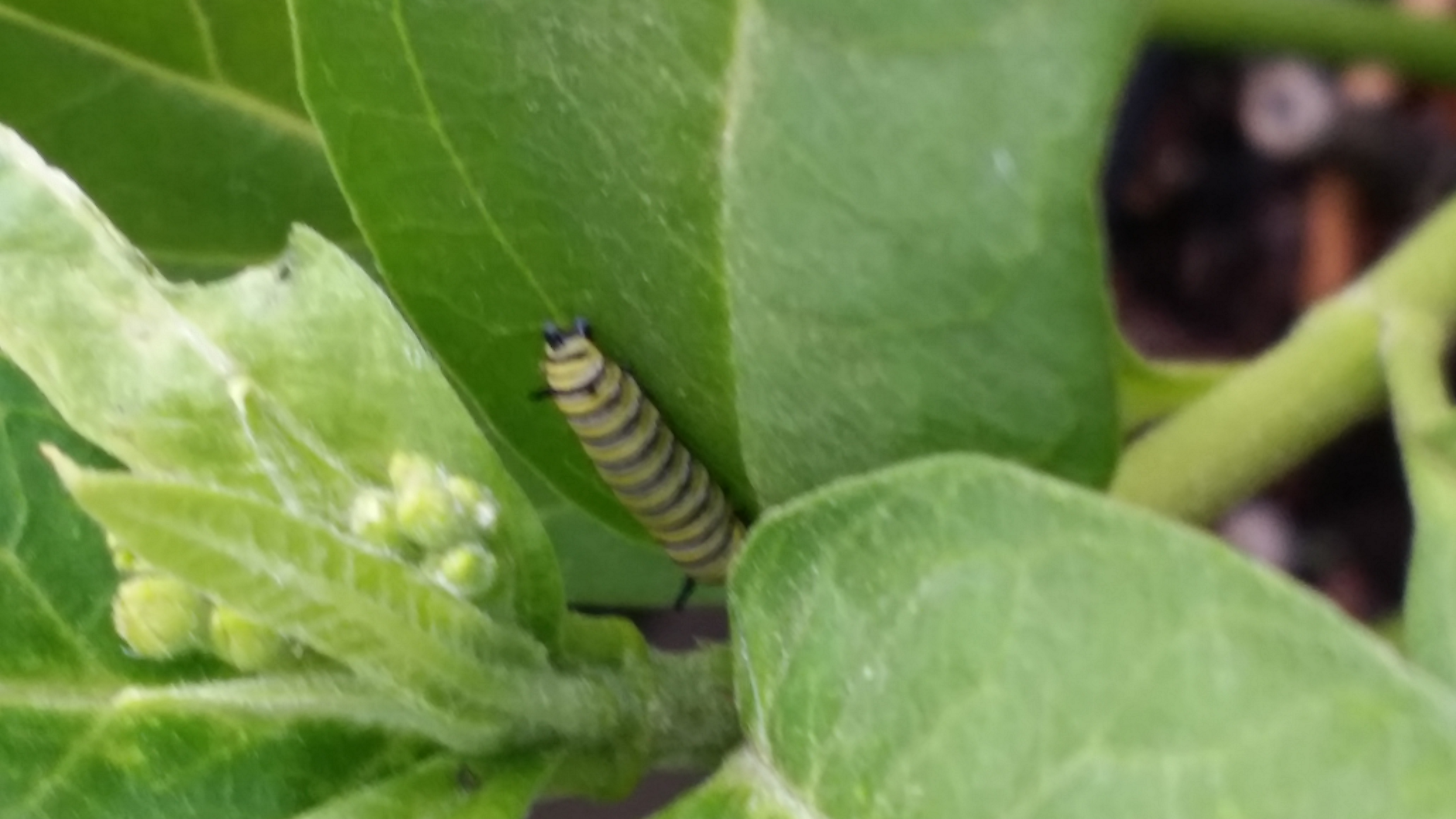 North American Monarch butterflies are known for their uncanny ability to migrate thousands of miles en masse ahead of the cold season in the Rockies to the warmer climates of California and Mexico. Monarchs are also known for their size and their distinctive orange and black markings, which serve not only as eye candy for humans but also as a warning to predators that they would be poisonous if consumed. This protective poisonous shield is derived from one unique aspect of their life cycle: North American Monarch butterflies are known for their uncanny ability to migrate thousands of miles en masse ahead of the cold season in the Rockies to the warmer climates of California and Mexico. Monarchs are also known for their size and their distinctive orange and black markings, which serve not only as eye candy for humans but also as a warning to predators that they would be poisonous if consumed. This protective poisonous shield is derived from one unique aspect of their life cycle:
Like all butterflies, the life cycle of monarch is one of metamorphic - from egg to larvae/caterpillar, to chrysalis, to butterfly. The monarch caterpillar can only feed on the milkweed plant, and female monarch butterflies will only lay eggs on a milkweed species.
Milkweed contains several poisonous substances called cardenolides that are toxic. But the monarch caterpillar, who will eat 2700 times its initial weight in milkweed, will pass down a poisonous shield to its future self so that it can fearlessly flit about the garden and openly display its beauty for all to see.
There are over 140 species of milkweed. These drought tolerant plants typically grow to about 2 1/2 feet. They are perennials and can thrive in both clay and sandy loam soils types. The poisonous milkweed plant has a bitter taste and grazing animals tend to avoid it unless penned up with nothing else to eat.
You can plant milkweek in your garden to attract monarchs. But be aware that milkweek sap is extremely dangerous if it gets in the eyes. We suggest wearing gloves when handling the plants. And BE SURE to keep babies and small children away from the plants (along with those puppies who tend to chew on everything even if it tastes awful.) Also verify with the nursery that the milkweed plants (or seeds) you buy have not been treated with pesticides. Once the monarch larvae hatch, placing a net over the plants will protect the monarch larvae from predator flies.
Sadly, according to the Center for Biological Diversity, there has been an enormous decline in the Monarch population over the past two decades! They believe the decline is due to the surge in use of RoundUp and other toxic pesticides and weed killers, and “widespread planting of genetically engineered crops in the Midwest” where the largest populations of monarchs are born. In California, the declines has plummeted 86% in 2019 compared to 2018 !!! as wildfires ravaged monarch habitats.
The monarch is not yet listed as an “endangered species” although a petition to do so has been filed. A hearing is set for June, 2019. Contact the department of U.S. Fish and Wildlife Services for more information.
***Designated photography by Liz Vernard, Liz Vernard Photography, Ojai, California |